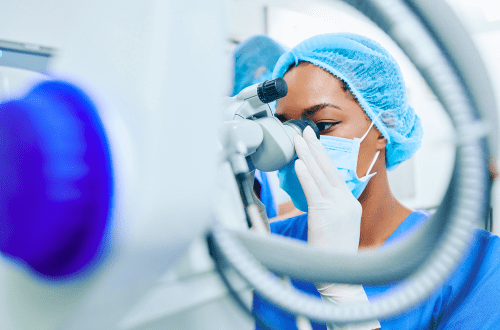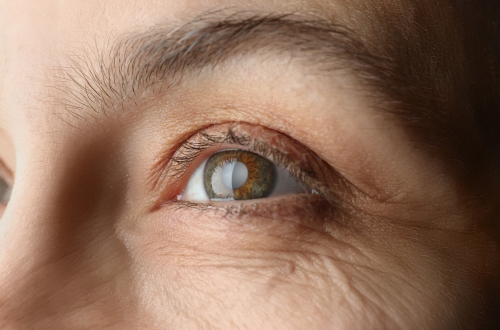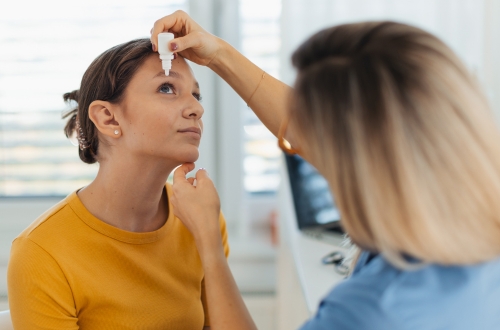The Intersection of Biotechnology and Ophthalmology: Key Developments for 2024
According to the World Health Organization, nearly 2.2 billion individuals globally are estimated to suffer from visual impairment. Of these cases, nearly half could be prevented or are inadequately treated due to several barriers within the realm of ophthalmology care. These barriers are multifaceted, primarily consisting of limitations related to accessibility and quality of eye care, particularly in low-income and middle-income areas. However, biotechnology, with its various tools and techniques, has demonstrated significant potential in addressing these barriers. As a result, the field of ophthalmology has seen remarkable developments due to advancements in these tools.
This article will explore three key areas of development expected for 2024, as well as their implications for the field of ophthalmology, including regenerative or stem cell therapy, artificial intelligence (AI), and nanotechnology.
Barriers in Ophthalmology and the State of Global Eye Care
The primary barriers to effective and accessible ophthalmology care include cost, physical distance, communication limitations, lack of patient involvement, and an insufficient number of qualified providers. The quality of care is also a significant concern, with primary obstacles being infrastructural support, provider education, and the availability of effective diagnostic and therapeutic interventions. However, with advancements in technology, the global eye care community has managed to demonstrate innovation and persistence in addressing these unmet needs for patients.
For example, cataracts remain the leading cause of preventable blindness worldwide, and although effective treatments have been developed, they are not as easily accessible across lower- or middle-income countries, where the disease burden is quite high. Despite this, organizations such as the Aravind Eye Care System in India and Tilganga Eye Centre in Nepal have maintained success in delivering high-volume, high-quality cataract surgeries by relying on a combination of cost-saving surgical techniques and community outreach. Biotechnology presents promising solutions to these issues, while providing opportunities to gain insight into disease characteristics to better our understanding of ophthalmic conditions.
Read on to learn three key areas of biotechnology that show promising potential for advancing the field of ophthalmology in 2024!
1. Regenerative or Stem Cell Therapy for Corneal Diseases
Although corneal transplantation remains the gold standard for treating scars in the cornea caused by the degeneration of corneal stroma cells, which result in gaps in the visual field, the clinical demand for grafts is far greater than tissue donor availability. To address this limitation, the focus of corneal disease therapy is shifting towards regenerative therapies, such as stem cell therapy. These have potential applications in ocular diseases such as limbal stem cell deficiency, corneal endothelial dysfunction, corneal stromal defects, and other conditions that severely impair the repair of corneal tissue cells.
Corneal stromal stem cells (CSSCs) are pluripotent stem cells that can be found in the corneal stroma and possess the ability to self-renew and differentiate into various corneal stromal cell types. Current research is investigating the efficacy of transplanting CSSCs to replace the need for conventional donor tissues and even regenerate the corneal stromal extracellular matrix, which is crucial for maintaining corneal transparency. Other advantages of this emerging approach include the fact that CSSCs are easily isolated, cultured, and expanded from the ocular tissues of patients or donors while maintaining their pluripotency and stable genotype. Several studies have demonstrated successful CSSC transplantations in the corneal stroma, as well as cell replacement therapy with chemically induced corneal endothelial cells (ciCECs) from mouse fibroblasts in the corneal endothelium.
Another promising development is the use of 3D bio-printing technology, which could aid in developing bio-carrier materials for the efficient delivery of stem cells to the required areas of the eye. In addition, stem cell secretions such as exosomes and extracellular vesicles are being explored for their potential as eye drops or sustained-release carriers, providing another avenue for the delivery of therapeutic stem cells.
2. The Growing Role of Artificial Intelligence Biotechnology in Ophthalmology
We are currently in an era wherein AI and machine learning (ML) algorithms are introducing revolutionary changes to various fields of medicine, particularly ophthalmology. One of the key applications of AI in this therapeutic area is helping automate the diagnostic process, enhancing efficiency and scale. For example, AI tools approved by the United States (US) Food and Drug Administration (FDA), such as those developed by Digital Diagnostics and Eyenuk, are already in use for diabetic retinopathy screening. Once a picture is taken of the back of the eye by a fundus camera, the AI algorithm automatically scans the area for signs of diabetic retinopathy before making a diagnosis recommendation with human intervention. Although more research is required into the validity of such an approach, preliminary data suggest that the use of AI-based screening improves the compliance rate for annual diabetic retinopathy screening.
Using biotechnology to assist in ocular disease screening in combination with traditional telemedicine approaches can streamline the amount of patients who require time-consuming in-person evaluation and management, promoting more efficient healthcare resource utilization. Similarly, this technology is currently being used in some settings to speed up the patient triaging process. For example, at the Moorfields Eye Hospital in London, an AI model has been developed to detect and quantify a type of Age-Related Macular Degeneration (AMD) called geographic atrophy. Whereas a human expert would require up to 43 minutes to complete this task, the AI model needs only two seconds, which potentially presents significant savings in time for clinicians. Lastly, AI-based biotechnology is also being explored in the field of predictive analytics and “oculomics,” which refers to the identification and association of ophthalmic biomarkers with systemic health and disease. Researchers are developing tools to help predict a patient’s response to a particular eye treatment based on their history, images, and clinical genetics.
3. Nano-Ophthalmology: Applications in Ocular Disease Diagnosis and Drug Delivery
With the rapid emergence of biotechnology innovations, such as regenerative therapy and AI, diagnosing and treating ocular diseases is becoming easier. However, several conditions are still considered untreatable, primarily due to late diagnosis or failure to deliver medicine to the affected area due to the intricate structure of the human eye. Many traditional methods of drug delivery in ophthalmology have commonly been fraught with inefficiencies and complications, including challenges in drug bioavailability and permeation, resulting in suboptimal treatment outcomes for patients.
However, ongoing advancements in nano-ophthalmology and materials science have led researchers to investigate the promising applications of nanosensor technology and nanomaterial-based drug delivery systems. First, nanosensors, or nanobiosensors, are miniature devices that can detect the presence of disease by measuring physiological parameters at the molecular level. This approach not only provides a noninvasive option for disease detection but also better enables early diagnosis by ophthalmologists.
Second, due to the unique properties and flexibility of nanomaterials, significant progress has been exhibited in the diagnosis, monitoring, and treatment of ophthalmic diseases. Their physicochemical properties allow the materials to pass through eye-related barriers relatively easily, as well as offer convenient controllability with respect to entry, degradation, clearance, and responsiveness of external factors like light or heat. Most notably, the development of biologically stable ocular nano-drug delivery systems has led to extended drug delivery, long-term controlled release, and targeted delivery. Therefore, this novel application not only overcomes the existing barriers associated with conventional drug delivery methods but also enhances drug bioavailability and permeability.
Conclusion
In conclusion, the application of biotechnology in ophthalmology has recently been introducing opportunities for transforming the state of eye health care. Several exciting developments have been taking place this year, including but certainly not limited to regenerative stem cell therapies, AI screening tools, and nanotechnology. Advancements in these areas of therapeutic development not only hold significant potential to overcome current barriers in the field, but they could also lead to patients having more treatment options, clinicians possessing improved diagnostic capabilities, and overall improving accessibility of eye care services worldwide. As we move through 2024, these key areas of development at the intersection of biotechnology and ophthalmology are providing critical changes in the field, which will ultimately improve the quality of life for individuals with visual impairments globally.
About TFS HealthScience Ophthalmology CRO
Experience the difference with TFS HealthScience Ophthalmology CRO for your next ophthalmology clinical trial! With a global mindset and local understanding, we provide a comprehensive suite of services, including study protocol design, medical monitoring, and project delivery. Our experienced teams and innovative technology ensure efficient delivery, no matter the complexity. Trust TFS HealthScience to take your study to the next level with our dedicated Ophthalmology team, led by the esteemed Marcia Swank, Vice President Head of Ophthalmology.
Visit our Ophthalmology CRO’s website to learn more about the data-driven solutions TFS can offer for your next clinical trial, or connect with a TFS representative here!
Download our one-pager on our expertise in Ophthalmology here!
Connect with Us
Contact us today to discover how TFS can be your strategic CRO partner in clinical development.



